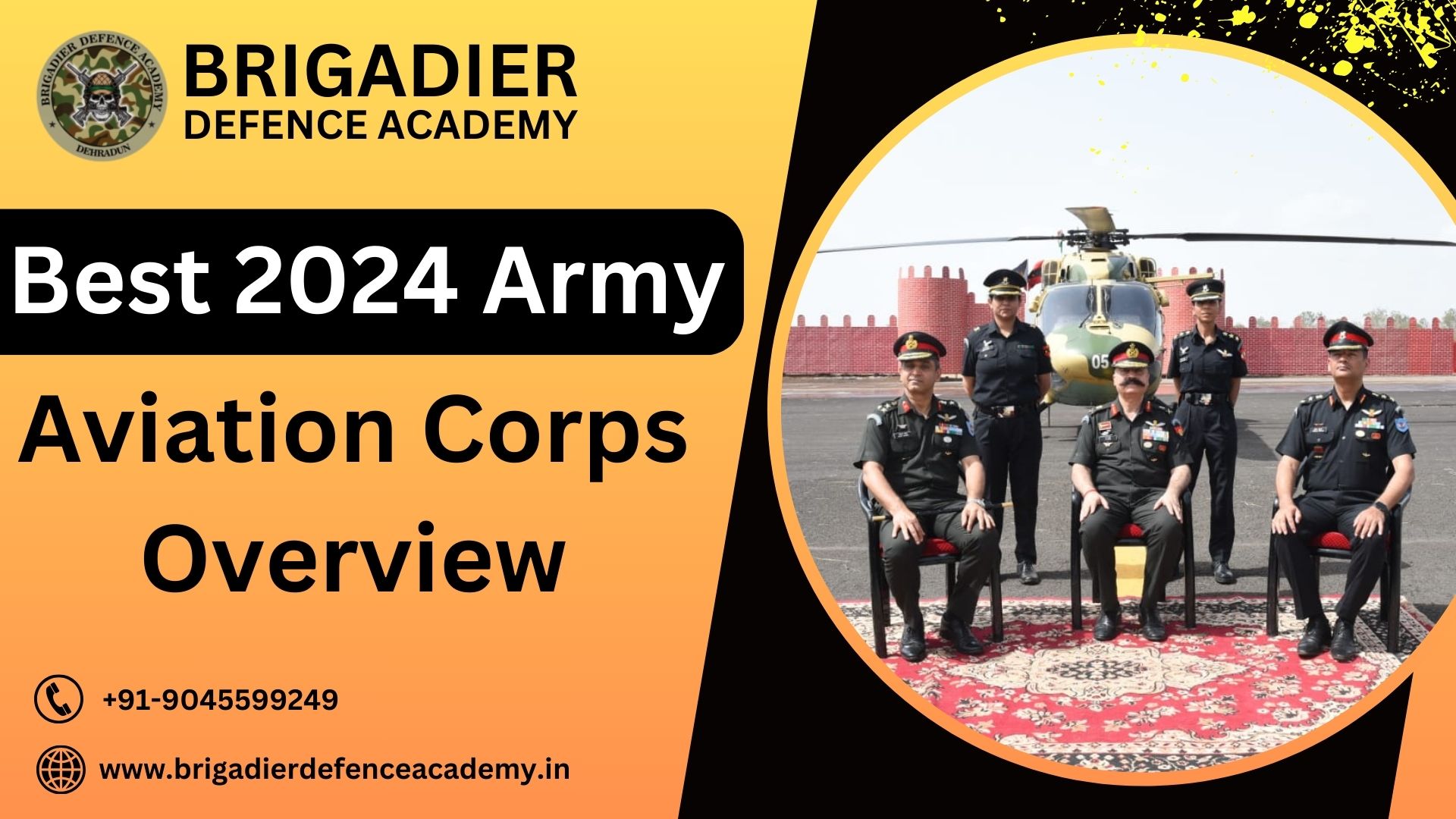- Posted on
- Manya
- No Comments
About Army Aviation Corps
The Army Aviation Corps, an integral component of modern military forces, stands at the forefront of aerial warfare and support operations. Comprising skilled pilots, dedicated ground crews, and advanced aircraft, it plays a crucial role in enhancing the combat capabilities and operational effectiveness of ground forces. As we delve into the overview of the Army Aviation Corps in 2024, it becomes evident that the corps has undergone significant advancements, adapting to emerging threats and evolving operational requirements.
Historical Background Of Army Aviation Corps
The roots of the Army Aviation Corps can be traced back to the early 20th century when militaries began to recognize the strategic importance of aerial platforms in warfare. During World War I, aircraft were primarily used for reconnaissance and artillery spotting. However, as technology advanced, their role expanded to include close air support, troop transportation, and medical evacuation.
The modern concept of Army Aviation Corps emerged during World War II, with specialized units dedicated to providing air support to ground forces. Since then, the corps has evolved significantly, incorporating helicopters, unmanned aerial vehicles (UAVs), and sophisticated aircraft tailored to meet the diverse needs of modern warfare.
Mission and Responsibilities
The primary mission of the Army Aviation Corps is to enhance the operational reach, agility, and lethality of ground forces through the use of aviation assets. This involves a range of responsibilities, including:
- Close Air Support: Providing direct air support to ground troops engaged in combat operations, including reconnaissance, target acquisition, and precision strikes against enemy positions.
- Troop Transport: Facilitating the rapid movement of troops and equipment across the battlefield, enabling swift deployment and redeployment as per operational requirements.
- Medical Evacuation: Conducting aeromedical evacuation (medevac) missions to evacuate wounded personnel from the battlefield to medical facilities for urgent treatment.
- Reconnaissance and Surveillance: Gathering real-time intelligence through aerial reconnaissance and surveillance missions, aiding in situational awareness and decision-making.
- Special Operations Support: Supporting special operations forces in conducting missions behind enemy lines, including insertion, extraction, and fire support.
- Disaster Relief and Humanitarian Assistance: Providing aviation support during natural disasters, humanitarian crises, and other emergencies, including search and rescue operations, transportation of relief supplies, and evacuation of civilians.
Organizational Structure
The Army Aviation Corps operates within a structured organizational framework designed to optimize its effectiveness and efficiency. Key components of the organizational structure include:
- Headquarters: Responsible for overall command, control, and coordination of aviation assets. This includes strategic planning, resource management, and policy formulation.
- Aviation Brigades: Formed by grouping multiple aviation battalions, brigades serve as the primary operational units of the corps. They are equipped with a diverse mix of helicopters, UAVs, and other aircraft to support ground forces in various roles.
- Aviation Battalions: The basic building blocks of the corps, aviation battalions are responsible for executing specific missions and tasks assigned by higher headquarters. They consist of multiple companies organized based on aircraft type and mission specialization.
- Support Units: Comprising maintenance, logistics, and administrative elements, support units play a critical role in sustaining the operational readiness of aviation assets. They ensure timely maintenance, supply of spare parts, and administrative support to facilitate mission execution.
- Training Establishments: Responsible for training and professional development of aviation personnel, training establishments provide instruction in flying techniques, tactics, technical skills, and leadership to ensure proficiency and readiness.
Capabilities and Assets
The Army Aviation Corps boasts a diverse fleet of aircraft and advanced capabilities tailored to meet the dynamic requirements of modern warfare. Key assets include:
- Attack Helicopters: Armed with missiles, rockets, and cannons, attack helicopters provide close air support and anti-armor capabilities to ground forces. They are highly maneuverable and capable of operating in hostile environments.
- Utility Helicopters: Versatile platforms used for troop transport, cargo airlift, medical evacuation, and reconnaissance. They can be rapidly reconfigured to perform various missions as per operational needs.
- Unmanned Aerial Vehicles (UAVs): Ranging from small tactical drones to large reconnaissance and strike UAVs, these unmanned platforms offer persistent surveillance, intelligence gathering, and precision strike capabilities without risking human lives.
- Special Mission Aircraft: Customized aircraft equipped with specialized sensors, communication systems, and mission equipment for conducting electronic warfare, intelligence gathering, and aerial refueling.
- Training Simulators: Advanced flight simulators and training devices enable realistic and cost-effective training for pilots and aircrew, allowing them to hone their skills in various scenarios and environments.
Technological Advancements
In recent years, the Army Aviation Corps has leveraged technological advancements to enhance its capabilities and maintain its competitive edge on the battlefield. Key technological trends include:
- Stealth Technology: Integration of stealth features in aircraft design to reduce radar signature and enhance survivability in contested environments.
- Network-Centric Warfare: Adoption of networked communication systems to facilitate real-time information sharing and collaborative decision-making across multiple domains.
- Autonomous Systems: Incorporation of artificial intelligence and autonomous capabilities in UAVs and aircraft to enable autonomous takeoff and landing, route planning, and mission execution.
- Precision Guided Munitions: Development of advanced munitions with improved accuracy and lethality, enabling precise targeting of enemy assets while minimizing collateral damage.
- Electronic Warfare Systems: Deployment of electronic warfare systems to disrupt and deceive enemy communications, radar, and sensor networks, thereby gaining a tactical advantage in the electromagnetic spectrum.
Future Outlook
Looking ahead, the Army Aviation Corps is poised to continue its evolution in response to emerging threats, technological advancements, and changing operational environments. Key areas of focus for the future include:
- Enhanced Multi-Domain Operations: Integration of air, land, sea, space, and cyber capabilities to achieve greater synergy and effectiveness in multi-domain operations.
- Autonomous Systems: Expanding the role of autonomous systems in aerial operations, including unmanned combat aerial vehicles (UCAVs) and autonomous logistics support aircraft.
- Directed Energy Weapons: Development and fielding of directed energy weapons, such as laser and microwave systems, for air-to-air and air-to-ground engagements.
- Human-Machine Teaming: Emphasizing human-machine teaming concepts to leverage the strengths of both human operators and autonomous systems for enhanced situational awareness and decision-making.
- Agile Logistics: Implementation of agile logistics concepts to ensure timely sustainment and support of aviation assets deployed in austere and contested environments.
In conclusion, the Army Aviation Corps remains at the forefront of military aviation, providing critical support to ground forces and shaping the outcome of conflicts through its agility, versatility, and technological superiority. As it continues to adapt and innovate in response to evolving threats and operational challenges, it will undoubtedly remain a key enabler of success on the modern battlefield.







